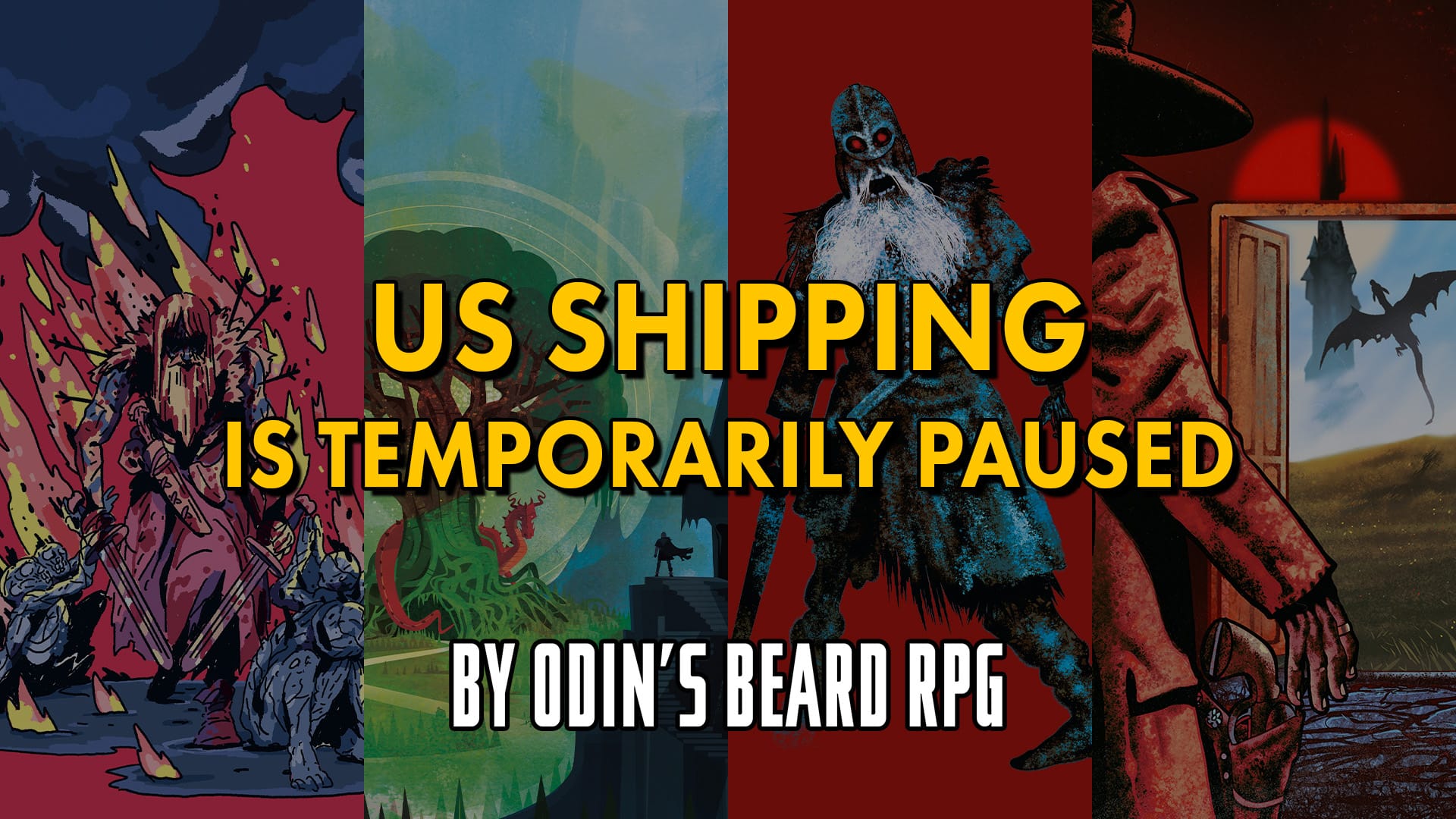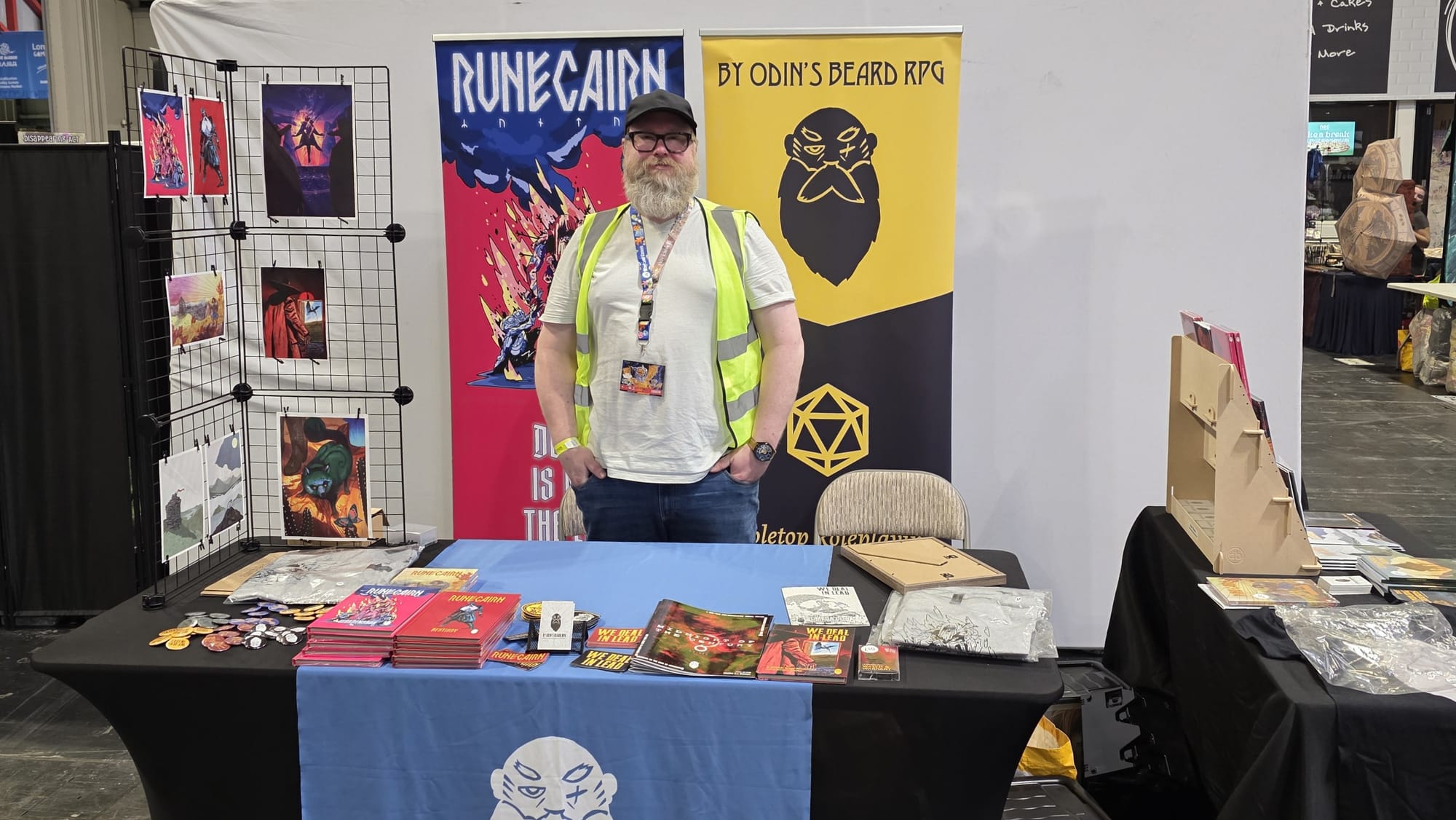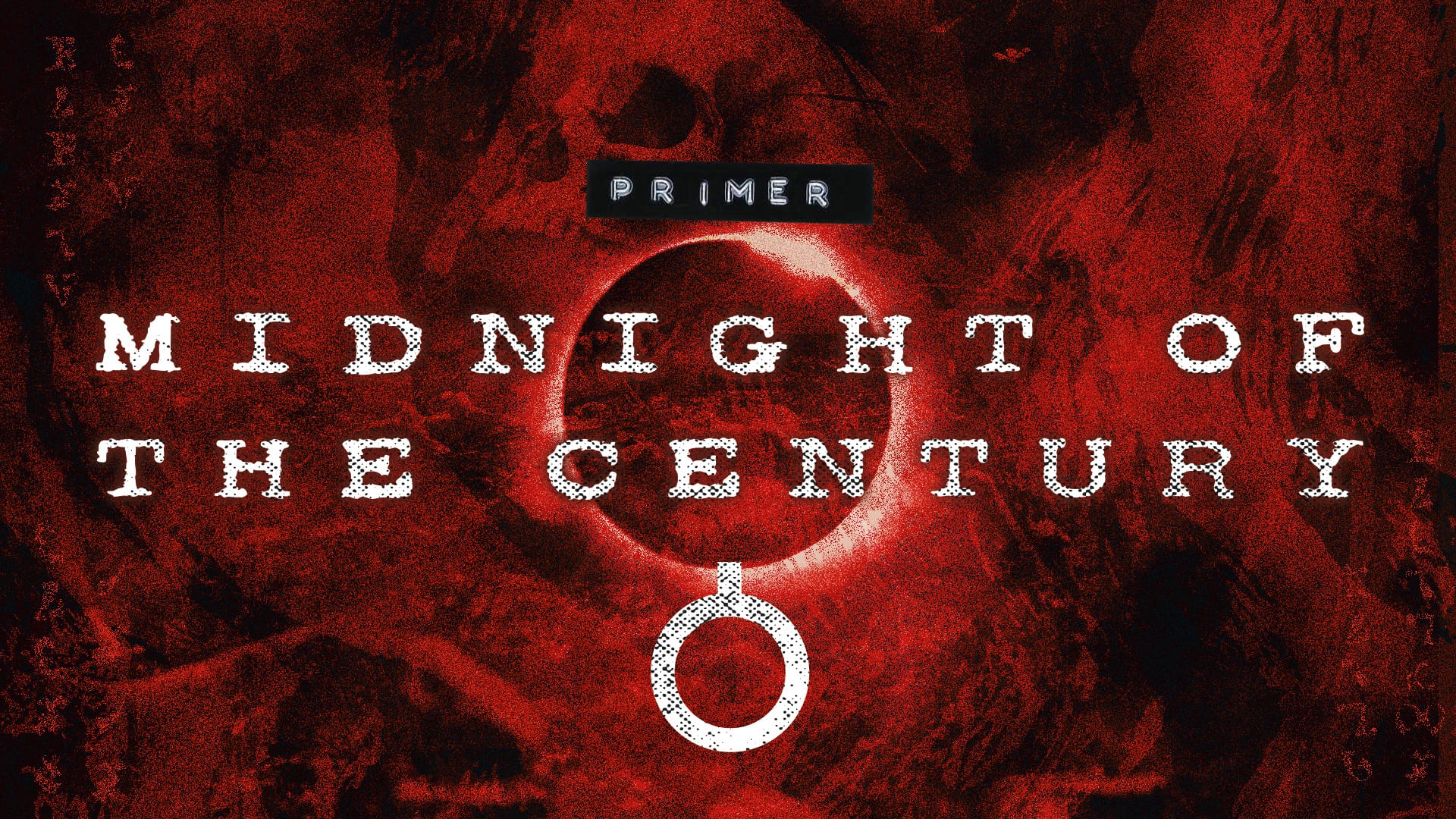
I was lucky enough to be invited to speak with an MA Worldbuilding with Creature Design class at Leeds Arts University earlier this month. Here's a rough outline of what I spoke about. Thanks to Ben and all the students for making me feel welcome and for asking some thoughtful, interesting questions!
Introduction
- I'm Colin Le Sueur, tabletop roleplaying game designer originally from Canada but now living in the Northeast of England with my wife and two cats
- I publish TTRPG systems and adventures under the name By Odin's Beard RPG and I've released games like Norse fantasy Runecairn and We Deal in Lead, a weird west TTRPG inspired by Stephen King's The Dark Tower series
Career Path
- I got my start playing RPGs back in the 90s, with Dungeons and Dragons (back then it was Advanced Dungeons and Dragons 2nd Edition) and games like Heroes Unlimited and Teenage Mutant Ninja Turtles and Other Strangeness; I ran some games for my friends but I was mostly a player rather than a DM (dungeon master) or GM (game master)
- I was big into the Forgotten Realms and Ravenloft novels at the time, along with the PC games like Dark Sun Shattered Lands
- I fell out of RPGs after high school and didn't start back up again until 2015; I joined a few D&D groups (then running D&D 3.5) and eventually started running games myself; I moved on to Pathfinder and started putting together session summaries for my players, where I'd write up what the characters did, the monsters they fought, and where they were in the current narrative
- These sessions summaries, along with my pre-game preparation, made me think I could write and publish some of my own D&D adventures
- I decided to adapt the Pathfinder campaign my players just finished and turned it into a 1st level adventure for D&D 5e; this is what became The Howling Caverns, a dark fantasy adventure inspired by D&D's gothic horror setting Ravenloft and folklore from Northeast England (namely Whitby)
First Published Work (The Howling Caverns)
- This was my first experience writing an adventure and I spent a lot of time researching; stuff like what makes a good adventure, how to make things easier for the GM, how to balance encounters for low level players
- I was a bit of an artist in school, but that fell off similar to my interest in RPGs; I decided to pick it back up again, primarily to start illustrating my own adventures
- I had no clue about layout or design, so I wrote and designed in Microsoft Word
- I eventually finished the adventure, complete with art and dodgy layout, and published the PDF on DriveThruRPG, an online TTRPG marketplace that sells adventures and supplements for any and all RPG systems
- Cut to 3 1/2 years later and I've published 7 books, sell in shops around the world, and in the process of having my work translated into Spanish and Portuguese
Design
Rules/mechanics
- Build on what already exists, don't try to reinvent the wheel
- Runecairn was my attempt at making a Dark Souls TTRPG, so I needed to find a system that would fit that concept
- I started with Cairn, an existing lightweight d20 system released under a Creative Commons licence; I used that as the base and tweaked the game mechanics and setting accordingly. The CC licence was sharealike, which means I've released the core rules as CC sharealike as well
- When it comes to lore and worldbuilding, I like to keep things high level, to leave enough room for secrets and mysteries but also for the GM to make the world their own
- We Deal in Lead has a more defined setting than Runecairn, and that's informed by the world of the Dark Tower, or at least my interpretation of it
Playtesting
- Important but more important is to know what feedback to ask for, questions like "how would you describe the game", "could you teach the game without looking at the rulebook?"
- Listen to feedback but don't take everything as gospel that must be changed
- Not everything needs to be playtested, but it's a good idea to bounce things off other people, to avoid an echo chamber
Layout
Indesign/Affinity Publisher/Google Docs
- There are lots of options for layout, ranging from free (Google Docs) to inexpensive (Affinity Publisher when on sale) to expensive (Adobe Indesign); I use Indesign as that's what I'm used to now, but use whatever works for you. There are plenty of helpful layout guides around
- Don't be afraid to steal cool layout ideas from your favourite books, though be sure to make them your own or put your own spin on them
- I love doing layout on my books but it can absorb so much time and focus; I'm working on more efficient workflows and styles to help speed things along
Art
Make your own
- Great if you're already an artist or are willing to put the time in to learn; I did all the art for my first two books and really enjoyed it, but I've since learned to let others help me as well
Public Domain
- Public domain, creative commons, and art packs are incredibly useful; there are curated lists out there of good public domain art (pieces you can use and adapt in your own work), but be aware that a lot of other people have access to the same art
- Be on the lookout for artists who release their art with commercial licences through Patreon, or who sell art packs on Itch or DriveThruRPG; there's lots of gold out there!
- Perplexing Ruins is an artist that I support on Patreon and he does amazing, evocative work
Commissioning
- If you've got the extra money, or are planning on crowdfunding, commissions can get you exactly what you need for your work
- Prices vary wildly but full colour pieces from established artists can be pretty expensive; absolutely worth it for a stunning cover—spend your money here if your budget's tight
Publishing
- In the TTRPG industry, DriveThruRPG is the big one, though Itch.io is not far behind (known primarily for independent video games). Both take a cut of all your sales, though you can choose how much on Itch
- I sell on both, with DriveThruRPG seeing more sales for my 5e work and Itch more with Runecairn and We Deal in Lead; if you can, I'd recommend selling on both as the sales will keep ticking over
- I offer free Community Copies of all my books on Itch, for those who can't afford the asking price; this helps more people see my games and also helps to build a mailing list for my future projects
- My first print run was through an independent UK printer; good quality but more expensive than other options; Mixam is the big player in the UK and they can cater to small or large print runs (10 copies to 1000+)
- A5 stapled books (usually referred to as zines) are a standard form factor for indie TTRPG publishers, and Mixam prints these at good quality for good prices
- Perfect bound (glued paperbacks) are more expensive and usually for bigger books (over 50 pages)
- Hardcover options start getting expensive fast, so I normally reserve these when crowdfunding with something like Kickstarter or Itch
Marketing
- As bad as Twitter can be, I've found it really useful for marketing and making new connections in the independent TTRPG scene
- Take your time and build connections first before selling your work
- Great for running ads, but the platform is really complicated and can get expensive quickly
Sales
- I started out by contacting the small press agent at Travelling Man and asking if they'd be interested in carrying my books; they agreed to take some on consignment (I ship them the books and they only pay me if they sell, taking a percentage for themselves)
Direct
- I tried selling books on Etsy but didn't get many sales; I later moved to Big Cartel when my sales picked up but found it a bit too restrictive for what I wanted
- Now I use Shopify, which has its own issues and is pretty expensive but does what I need
Wholesale
- I reached out to different game shops, first in the UK and then in the US and Canada; most places are willing to take a chance on small orders and new creators
- Shops usually buy at wholesale prices, which is 50% of the sticker price (retail price); you'll make more money selling direct for individual books but wholesale works well for me
- Getting your books into online TTRPG retailer Exalted Funeral in the US is an obvious goal, as they have a wide reach and big customer base; they're always looking for new print books and they'll normally take a decent number of copies
Fulfilment
- I ship out most of my own books, using Royal Mail; 2nd Class for UK orders and Standard International for everywhere else
- People may be willing to pay more for tracked shipping but it's an extra headache to deal with and Royal Mail is usually pretty good with small orders
- I've got books in Canada that I use for some North American fulfilment, but only certain books; international shipping gets complicated really quickly, so I'm also using a UK-based indie TTRPG fulfilment company (Peregrine Coast Press) for upcoming releases. They handle the fiddly bits which I'm happy to pay for
Crowdfunding
- Kickstarter is the biggest and has the most reach, though the stress of a even a small Kickstarter can be no joke; costs can easily get away from you, so make sure you've researched as much as possible and account for extra costs in your funding goal
- I've had success with crowdfunding on Itch with We Deal in Lead; this was a slower, more gradual campaign and I kept adding goals organically as I raised more money. I started off with a playable yet sparse version of the PDF and offered regular updates to the text and rules
Patreon
- Patreon's a good option but be aware of the pitfalls and over-committing to expensive reward tiers; only do what you can manage, even if costs you Patrons
- Having a steady small income from Patreon can help a lot and it's a built-in audience for updates and feedback
Conventions
- Last November I tabled for the first time, at Thought Bubble in Harrogate; this was a great experience and I made a decent profit, even though it's primarily a comic and art festival
Header art by Alec Chalmers





